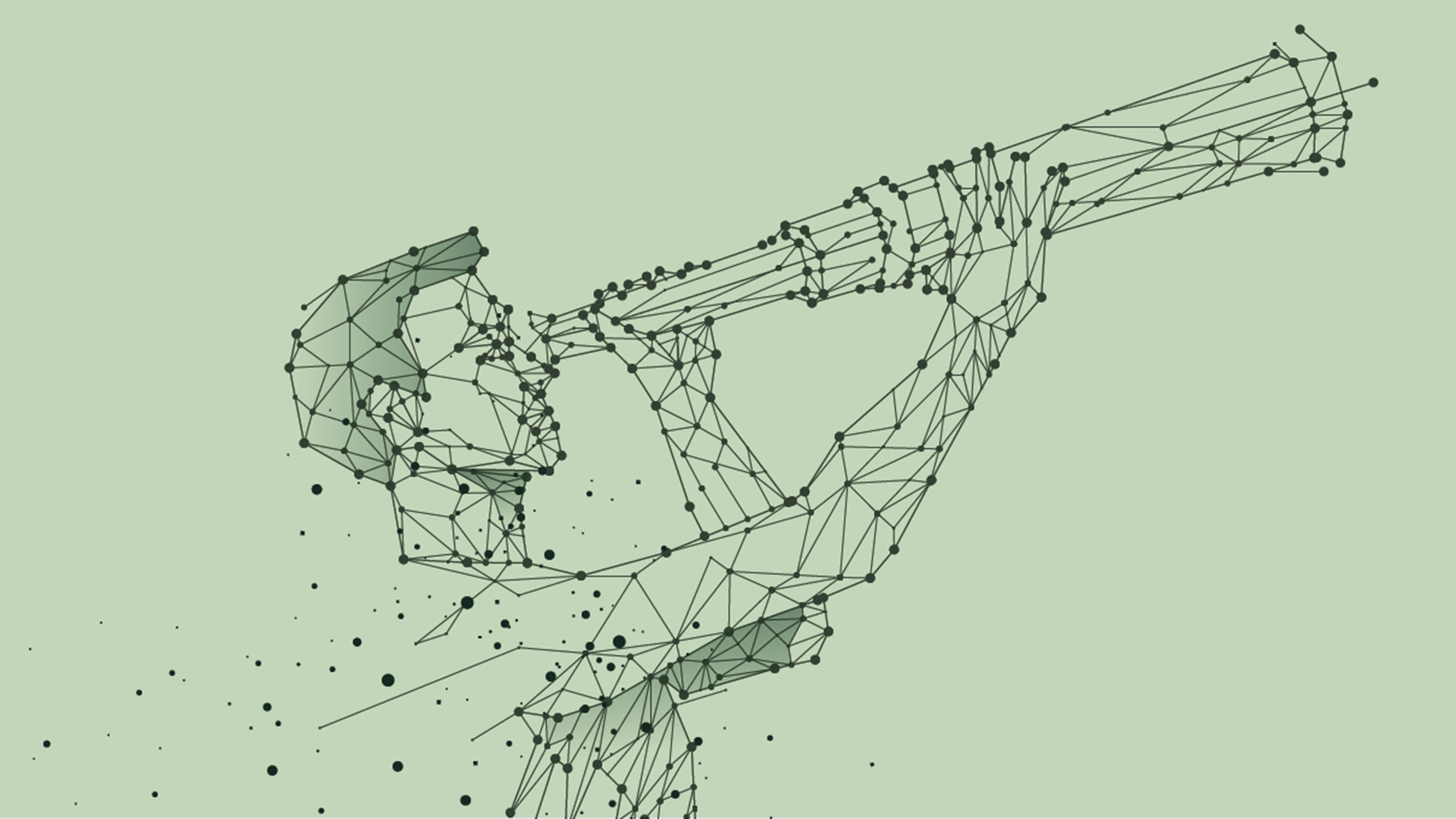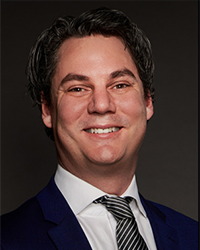

- Daniel LaRocco
- Director, Money Markets, Northern Trust Asset Management

- Wouter Sturkenboom, CFA
- CFA, Chief Investment Strategist, EMEA and APAC, Northern Trust Asset Management
The past couple of years have been highly turbulent for the short-term investment market – right from the onset of the Covid-19 pandemic in March 2020.
Nobody had a playbook as to how to deal with the health crisis – arguably a once in a century black swan event – and, more than two years later, the world is still grappling with new variants, ongoing business challenges, and the longer-term fallout. In addition, corporates in specific sectors, such as travel and hospitality, faced collapse as worldwide lockdowns halted billions of dollars of revenue overnight.
Daniel LaRocco, Director, Money Markets, Northern Trust Asset Management (NTAM), recalls: “As a corporate treasurer, the knee-jerk reaction was to access as much liquidity as possible because nobody knew how long the situation was going to persist.”
Naturally, that liquidity was precious. It once again demonstrated the importance of cash. For example, during 2020, there was $1.7tr. worth of new investment grade bond issuance. “That $1.7tr. was the result of corporations going to the bond markets because funding levels were cheap after the Fed lowered rates,” LaRocco explains. “Corporates wanted that cash as a safety net for whatever their industries may encounter next. They needed that cash to make it through the coming few months.”
These actions were a prime demonstration that during a crisis, the first thing that corporations do is draw on liquidity for whatever their obligations are, significantly impacting short term money markets and proving cash really is king.
A Treasurer’s Guide to the Latest Investment Trends
This article is part of a playbook, created by TMI and Northern Trust Asset Management, which explores current trends in short-term investing.
New era or false dawn?
Fast forward a couple of years and the aftermath of national and international responses to the pandemic has triggered a spike in inflation and, for the first time in over a decade, interest rate hikes from central banks. This represents a new economic landscape for treasurers, including economic conditions that treasurers have never experienced before.
“The interest rate environment has changed from one where investors were earning nothing on their cash to an environment where, by the end of 2022, they can expect to see cash yields between 3.5-4%, depending on how correct the Fed funds futures market is,” LaRocco notes. “This makes cash a more attractive asset class again.”
With inflation in the US and UK hitting peaks not seen in more than 40 years and the Eurozone experiencing its highest ever inflation rate of 9.1% at the end of August 2022, it is no surprise that central banks have become increasingly hawkish in both their comments and actions this year, with both the Federal Reserve and Bank of England embarking on a series of interest rate hikes. The European Central Bank (ECB) followed suit in July with an initial 50 basis points (bps) hike, which took its main deposit rate out of negative territory for the first time in over eight years. It followed this up with a 75 bps hike in September.
Compared with the perpetual low or negative rate environment that treasurers have been dealing with for years, this radical change of gear may appear to herald a new era for short-term investing. However, there are signs that the interaction of different market forces may prevent the current direction of travel from spiralling upwards for much longer.
Wouter Sturkenboom, CFA, Chief Investment Strategist, EMEA and APAC, Northern Trust Asset Management (NTAM), explains: “At NTAM, we’re thinking about how growth, inflation, and monetary policy interact at this sensitive time of elevated current inflation. The starting point is that hawkish expectations around central bank policy – the interest rate hikes currently priced in over the next 12 months – have pushed interest rates up and pushed equity markets down.” These external events, combined with the internal dynamic of expectations around monetary policy and tightening financial conditions, threaten economic growth.
“We’re in a growth slowdown,” confirms Sturkenboom. “In turn, this will enable inflation to come down from the current very high levels to much lower, but still elevated, levels. We believe there will be a 3-4% drop in inflation over the next 12 months.”
This feedback loop between growth, inflation trends, and monetary policy can be tricky for treasurers and other cash investors to read. After all, the process starts with hawkish expectations for central bank rate hikes, but ends with a dovish outlook for central bank policy as implemented.
“We’re anticipating one or two fewer rate hikes this year than is currently priced in by the Fed and the ECB,” reveals Sturkenboom. “For treasurers, this impact depends on whether they are in a three-, six- or 12-month investment schedule. Those on the three-month schedule are probably going to be on par. Those on six-months might get the first ‘non-hike’ compared to what is priced in, and those on 12-months could get the second one. Treasurers must keep in mind where they are in that short- duration spectrum.”
This is a crucial point to consider, as the knock-on effect of simply assuming the market is correct could lead treasurers to make sub-optimal investment decisions, particularly in the near term. “Over the next three months, it’s imperative to be careful in the rising rate environment,” comments Sturkenboom. “Don’t lock in rates for too long a period unless you have a very long-term horizon.”
Seeing interest rates rise is tantalising for treasurers after an era of low-to-zero rates at the very short end of the investment curve. Nobody wants to be locked into a specific short-term investment instrument for three months at a lower rate, knowing that the rate will go higher the following week. “There is a short-term advantage to waiting and then jumping in,” notes Sturkenboom. “If I were a treasurer right now, I would be looking at what the short-duration financial markets spectrum offers in terms of product mix.”
Fit for purpose?
Of course, the instruments that treasurers can invest in and the levels of duration and credit they can take are usually set by the organisation’s short-term investment policy (many of which are often neglected, and therefore outdated and in need of modernisation). While it is a good habit to review the investment policy every couple of years, the scale of the changes seen in the short-term investment space this year alone makes it essential that treasurers review and, if necessary, amend their policies for the new normal.
Indeed, by broadening the suite of products they consider, to include, for example, conservative ultra-short and ultra-short solutions, or cash segmentation products (see Chapter 3), treasurers can in fact be better equipped to combat current investment risks. Moreover, the tactical use of MMFs, which are more responsive to a changing rate environment then fixed term deposits, can be beneficial in a rapidly shifting macroeconomic situation. All of this means that a flexible, modern investment policy is a must.
“The old model of simply looking for the most attractive term deposit to ‘set and forget’ for a certain period is not the most appropriate tactic anymore,” Sturkenboom states emphatically. “Treasurers should interrogate their investment policy, explore how they want to behave in this type of environment, and look at the types of products that can help them maximise their cash accordingly.”
The cloud of further regulatory reforms for the MMF sector (see Chapter 4) is another trigger to review policy, as LaRocco outlines. “Money market reform is a perfect time for corporate treasurers to look at their investment policies and see what type of structures or approaches they might be allowed to have in their liquidity suite.”
You are not alone…
Faced with radical change in the short-term investment space, treasurers can often benefit from industry partners, such as technology vendors and asset managers, providing tools and support to help them to make sense of the new environment, as LaRocco explains: “NTAM’s cash segmentation platform has tools to support treasurers with their cash management and to optimise the allocations of their liquidity. It is possible to have a high-quality and diversified portfolio with different sleeves of risk and return.”
Cash segmentation splits out cash into three different buckets, marginally increasing in duration and credit risk, including MMFs, conservative ultra- short and ultra-short strategies. This approach has gained in popularity amongst corporate treasurers, during the low interest rate environment, as a means of maximising yield whilst maintaining liquidity and capital preservation. but remains an agile and flexible strategy for treasurers in today’s rate environment. Applying technology and expert insight to such a strategy can help treasurers make the most of their cash.
“Our optimisation tools help investors direct the right cash allocations for their organisations into those different buckets,” continues LaRocco. Optimising those buckets to have the best risk/ reward profile is a way of compensating our investors for the risks they take.”
With the wide range of MMFs available today, featuring different profiles, duration, and credit freedoms, treasurers need to weigh up whether they feel comfortable taking all those decisions themselves. The alternative is to look for a partner, such as that of an asset manager, with a proven track record to assist in the process.
“Treasury teams face a great deal of complexity in the short-term investment space today,” concludes Sturkenboom. “They have to figure out the variety of new and evolving investment products available to them. At the same time, they must continue to track the market and all
the different central banks to try to see what’s coming next. This is a great reason why treasurers should look for products that work for them and have all of that knowledge embedded within them – from a duration, credit, and monetary policy outlook perspective.”



